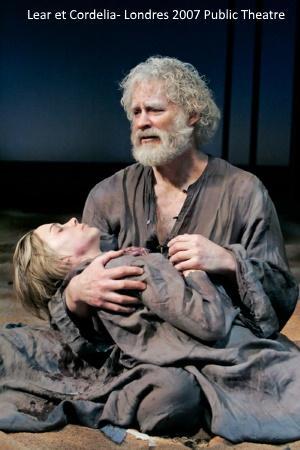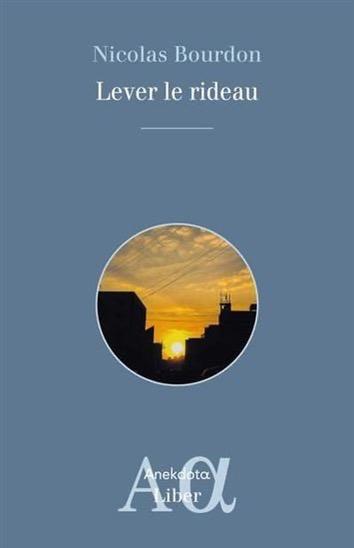L’incarnation, remède au refroidissement de la planète humaine
« L'incarnation consiste dans le fait d'avoir une chair - davantage peut-être: d'être chair. » Michel Henry
Elle a 17 ans, elle a gagné des prix littéraires. Elle signe, de toute son âme, un article où elle prend l’engagement de ne pas « enfanter ». Elle croit pourtant que cet acte, en plus d’être naturel, est l’occasion d’un amour inconditionnel pour l’enfant, mais c’est justement pour cette noble raison qu’elle y renonce, tenant compte du sort à ses yeux réservé aux enfants sur la planète et dans l’humanité du XXIe siècle et jugeant l’adoption préférable à l’ajout d’un nouvel être.
Si, après « l’environnement ravagé», elle décrit la «société dépravée», il est une troisième dimension implicite de son choix qui doit retenir notre attention : elle a grandi dans un milieu encombré de machines, où un rapport homme-femme réel et amoureux n’est plus perçu comme le moment premier et nécessaire de l’enfantement.
Nous conversons tous les jours avec des robots sans en souffrir le moins du monde. On nous annonce l’utérus artificiel pour demain, nous déclarons sur un ton joyeux qu'on n’arrête pas le progrès. Il en résulte une glaciation des cultures, un refroidissement de la planète humaine plus incontestable que le réchauffement de la planète physique. Déshumanisation ! Un mal d’autant plus pernicieux qu’il est indolore.
L’incarnation, que nous célébrons à Noël, est le seul remède à ces maux indissociables. Me permettra-t-on de reprendre un témoignage récent : « Je suis né dans le pays de Marie de l’Incarnation et je mourrai noyé dans cette vague de l’histoire, la "Singularité", où, selon les transhumanistes, l’intelligence artificielle dépassera l’intelligence incarnée. »[1]
Si utile soit-elle techniquement, si prodigieuse même qu’elle puisse paraître, l’intelligence artificielle n’est pas une âme rayonnant à travers la matière, c’est une machine logique imbriquée dans les rouages d’une machine métallique. L’hybride qui en résulte est la chose au monde à laquelle nous devons le plus éviter de ressembler. Ce qui nous invite à cultiver les rapports réels d’humain à humain, de vivant à vivant, à admirer les êtres et les œuvres qui en ont porté les évocations à leur plus haut degré de perfection.
Il se trouve que Jésus de Nazareth a été en tant que modèle pour tous et muse pour les artistes, la source d’une multitude d’accomplissements incarnés propres à humaniser les humains en les faisant participer à la divinité.
 Aimez-vous le Bach des cantates, le Giotto peintre de saint François, le Shakespeare du Roi Lear et de Cordelia, le Victor Hugo des Misérables et de Jean Valjean, la Charlotte Brontë de Jane Eyre ? Admirez-vous la multitude des artisans amoureux de la même beauté, Pascal et les autres savants à la recherche de la même vérité? Jésus ne fut-il pas l’atmosphère où ils ont tous vécu?
Aimez-vous le Bach des cantates, le Giotto peintre de saint François, le Shakespeare du Roi Lear et de Cordelia, le Victor Hugo des Misérables et de Jean Valjean, la Charlotte Brontë de Jane Eyre ? Admirez-vous la multitude des artisans amoureux de la même beauté, Pascal et les autres savants à la recherche de la même vérité? Jésus ne fut-il pas l’atmosphère où ils ont tous vécu?
Ces œuvres coulent de la même Source que le plus chrétien et le plus humain des poèmes : «Frères humains qui après nous vivez, n’ayez les cœurs contre nous endurcis.» Quelle était la Source de ce futur pendu appelé François Villon?
D’autres êtres beaux et bons, en d’autres lieux et en d’autres époques, ont fécondé un désir de perfection manifestement présent au cœur des humains. En ce moment, je vois à ma gauche un Bouddha coréen que je ne contemple jamais sans être ravi. Avant Jésus, les sculpteurs, les poètes et les philosophes grecs avaient atteint une perfection plus proche certes de la justice que de la charité, mais admirable au plus haut degré.
« Pour les chrétiens, l’incarnation, c’est d’abord le Verbe fait chair : Verbum caro factum est. Le rayonnement de l’esprit à travers la matière existe toutefois sous d’autres formes pouvant avoir un sens pour tout être humain : l’union intime de l’âme et du corps ; l’union de l’inspiration et de la matière dans le grand art ; l’union d’une intuition et d’un objet pour former un symbole, une métaphore, un mythe ; la symbiose avec la vie dans la nature ; l’introduction du ferment de l’amour dans la famille et dans la société; le passage de l’idée au concret dans l’accomplissement d’une mission. L’univers lui-même peut être considéré comme l’union d’un prin- cipe divin et de la matière. »[2]
Le fait qu’il existe d’autres sources n’enlève rien à la fécondité de la source chrétienne, ni à son originalité profonde consistant à faire de l’incarnation son centre de gravité. Nous couper de cette source, qui fut celle de nos ancêtres et en éloigner par là-même le reste de l’humanité, c’est renoncer à faire notre part pour redonner le sourire à nos paysages et à nos sociétés…et pour permettre aux adolescentes de renouer avec le désir de transmettre la vie.
L’Église chrétienne a souvent été détournée de son fondateur par ses représentants. Elle l’est encore aujourd’hui, elle le sera toujours. C’est le triste destin de toutes les institutions humaines. N’ajoutons pas à cette trahison de la tradition la fatale amnésie conduisant à l’indifférence à l'endroit de la Source.
Ceux qui espèrent encore limiter la désertion et la démolition des églises de pierre doivent comprendre que tout passe par la voie qu’emprunta François Villon en toute liberté, une voie en forme de croix combinant l’admiration pour la perfection et la compassion pour ceux qui ne sont même pas en état de l’entrevoir.
The Incarnation, the remedy of the cooling of the human planet
"Incarnation consists in having flesh - perhaps more: being flesh. "Michel Henry
She is 17 years old, she has just won two literary prizes (2019). About to enter university, she signed an article, with all her heart, in which she engages herself to never have a child. She nevertheless believes that bearing a child is most natural and the occasion of unconditional love for the child, but it is for this very noble reason that she renounces it, and is taking into account in her eyes, the future of children on our planet and in our humanity in the 21st century. She judges adoption to be preferable than adding another child.
If, faced with a « ravaged environment », she describes « society as depraved », it is the third implicit dimension of her choice which draws our attention: she grew up in a milieu over powered with machines, in which a real and loving relationship between man and woman is no longer regarded as the primary and necessary moment to bear a child.
We deal with robots constantly without any regard for what they imply. We talk of the artificial uterus of the future; we declare in joyous tones that we cannot stop progress. It results in the glaciations of cultures, in the cooling of the human planet more evident than the warming of the physical planet. Dehumanization! An evil all the more pernicious as it is painless.
The incarnation, which we celebrate at Christmas, is the only remedy or these inseparable ailments. Allow me to repeat a recent testimony: “I was born in the world of Marie de l’Incarnation and I will die drowned in this wave of history, the “Singularity”, where, according to transhumanists, artificial intelligence will supersede incarnate intelligence.”[1]
If technology is as useful as it is, as prodigious as it might appear, artificial intelligence is not a shining soul across matter, it is a logic machine embedded in the wheels of a metallic machine. This resultant hybride is the thing in the world which we must most avoid resembling. What we are invited to do is to cultivate real relations between humans, living to living, to admire the beings and the works which evoke the highest degrees of perfection.
It turns out that Jesus of Nazareth was as a model for people and a muse for artists, the source of a multitude of incarnate accomplishments in order to humanize humans by participation in the Divinity.
 Do you like Bach’s cantatas, the painting of Saint Francis by Giotto, King Lear by Shakespeare, Les Misérables and Jean Valjean by Victor Hugo? Do you admire the multitude of artisans of the same beauty, Pascal and the other intellectual in search of the same truth? Was not Jesus the atmosphere in which they all lived?
Do you like Bach’s cantatas, the painting of Saint Francis by Giotto, King Lear by Shakespeare, Les Misérables and Jean Valjean by Victor Hugo? Do you admire the multitude of artisans of the same beauty, Pascal and the other intellectual in search of the same truth? Was not Jesus the atmosphere in which they all lived?
These works arise from the same Spring as the most Christian and the most human of poems: “Brother humans who live after us, do not let your hearts harden.” What was the origin of this hanged man called François Villon, “French poet of the Late Middle Ages”?
Other good and beautiful beings, in other places and other times, developed the desire of perfection manifestly at the heart of humans. As I write, I see to my right a Korean Buddha which I can never contemplate without being delighted. Before Jesus, sculptors, poets and Greek philosophers attained a certain perfection, closer to justice than to charity, it is true, but none the less admirable to the highest degree.
For Christians, the Incarnation is first of all the Word made flesh: Verbum caro factum est. The radiating of the spirit through matter exists nevertheless exists in other ways that make sense of the human being: the intimate union of body and soul; the union of inspiration and materials in great art; the union of intuition and object to form a symbol, a metaphor, a myth; the symbiosis of life in nature; the introduction of the fermentation of love in the family and in society; the development of an idea into a concrete accomplishment of a mission. The universe itself could be considered as the union of a divine principle and matter.
The fact that there are other springs removes nothing from the fecundity of the Christian spring, nor its profound originality consisting in the Incarnation as its centre of gravity. To cut ourselves from this spring, which was that for our ancestors and with that from the rest of humanity, is to renounce undertaking our part to return the smile to our land and to our societies … and to allow young women to reconnect with the desire to transmit life.
The Christian Church has often been diverted from its founder by its representatives. It is today, it will always be. This is the sad fate of all human institutions. Let us not add to this betrayal of tradition the fatal amnesia which leads to an indifference towards the Source.
Those who still want to limit the desertion and the demolition of stone churches must understand that everything passes by the road used quite freely by François Villon, a way in the form of a cross, combining the admiration for perfection and compassion for those who are not even in a position to glimpse it.






